Digital
RUSH 26 Z App 2.0
-
Pou Auaha / Creative Directors
Stephen Horner, Adeline Salkeld -
Pou Rautaki / Strategic Leads
Felipe De Souza, Anastasia Levina, Chris Pike
-
Ringatoi Matua / Design Directors
Stephen Horner, Adeline Salkeld
-
Ngā Kaimahi / Team Members
Joshua Baxter, Yi Zhang, Harry Jackson -
Kaitautoko / Contributors
Kate Thomason, Byron Thornhill, Ellia Colley, Lizzie Summers -
Client
Z Energy
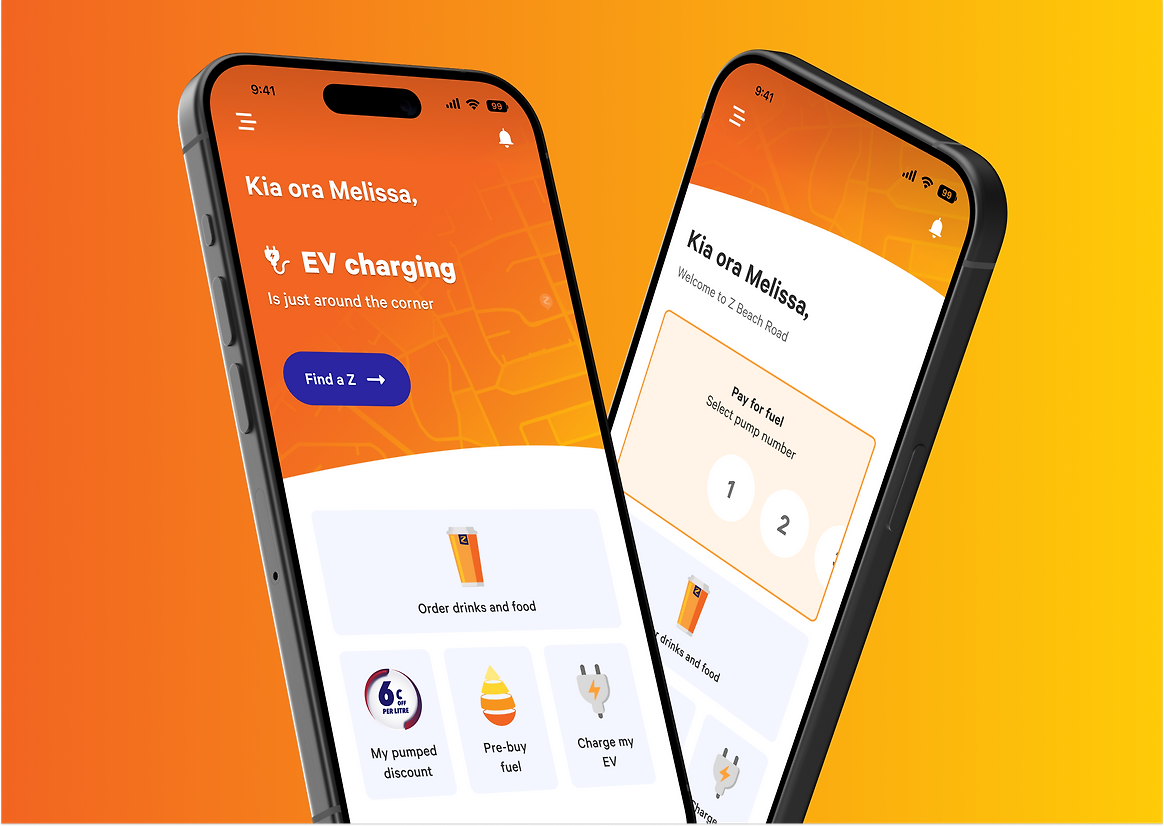
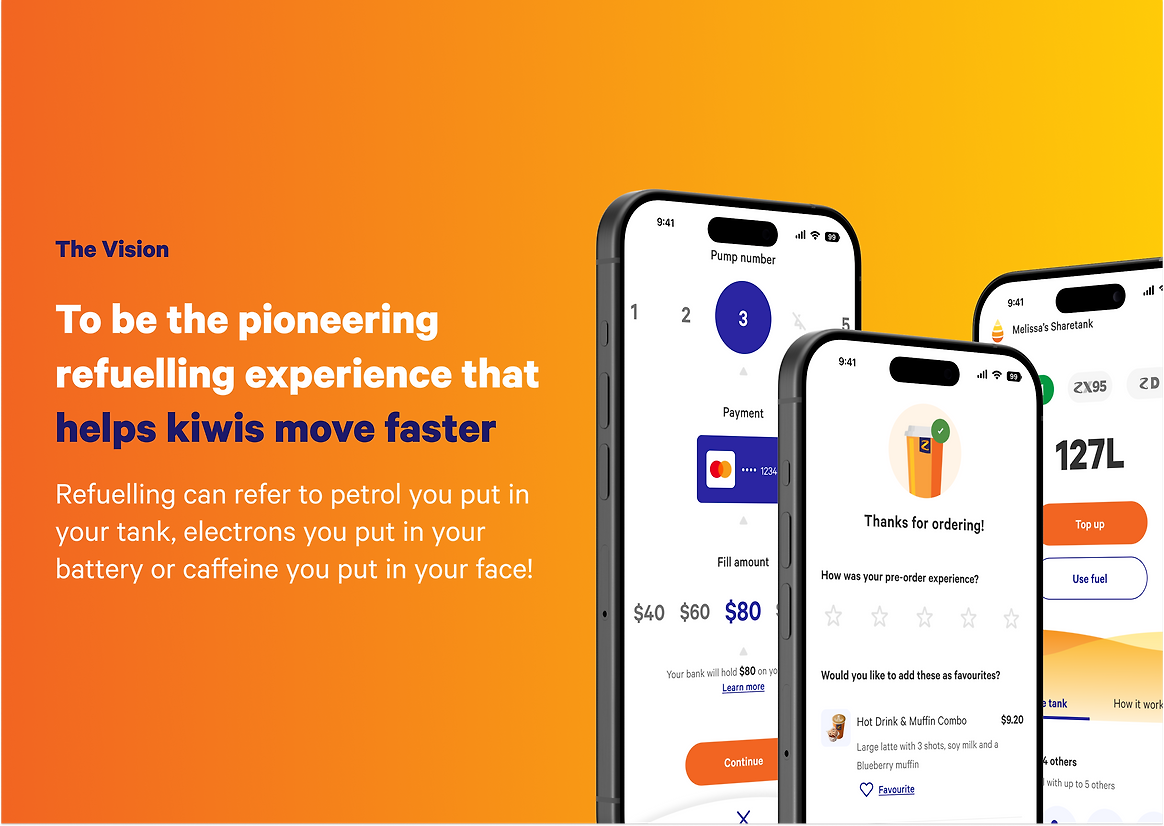
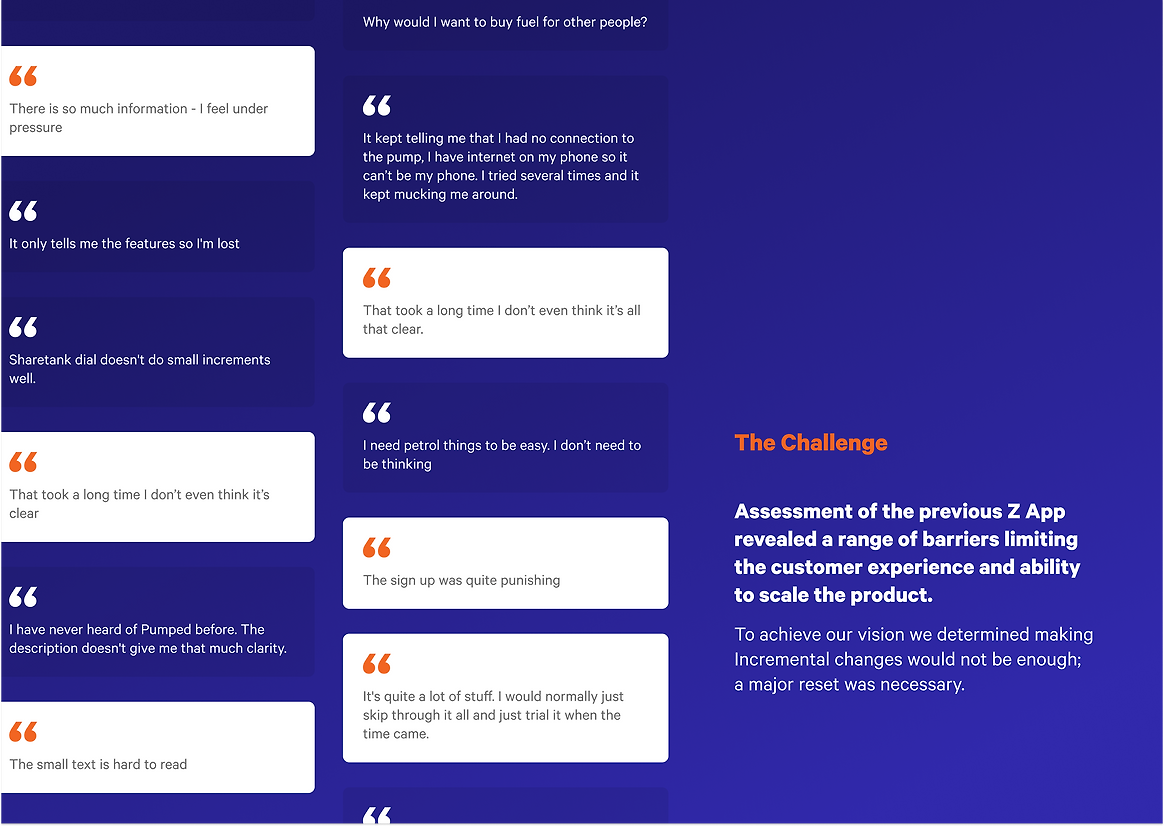
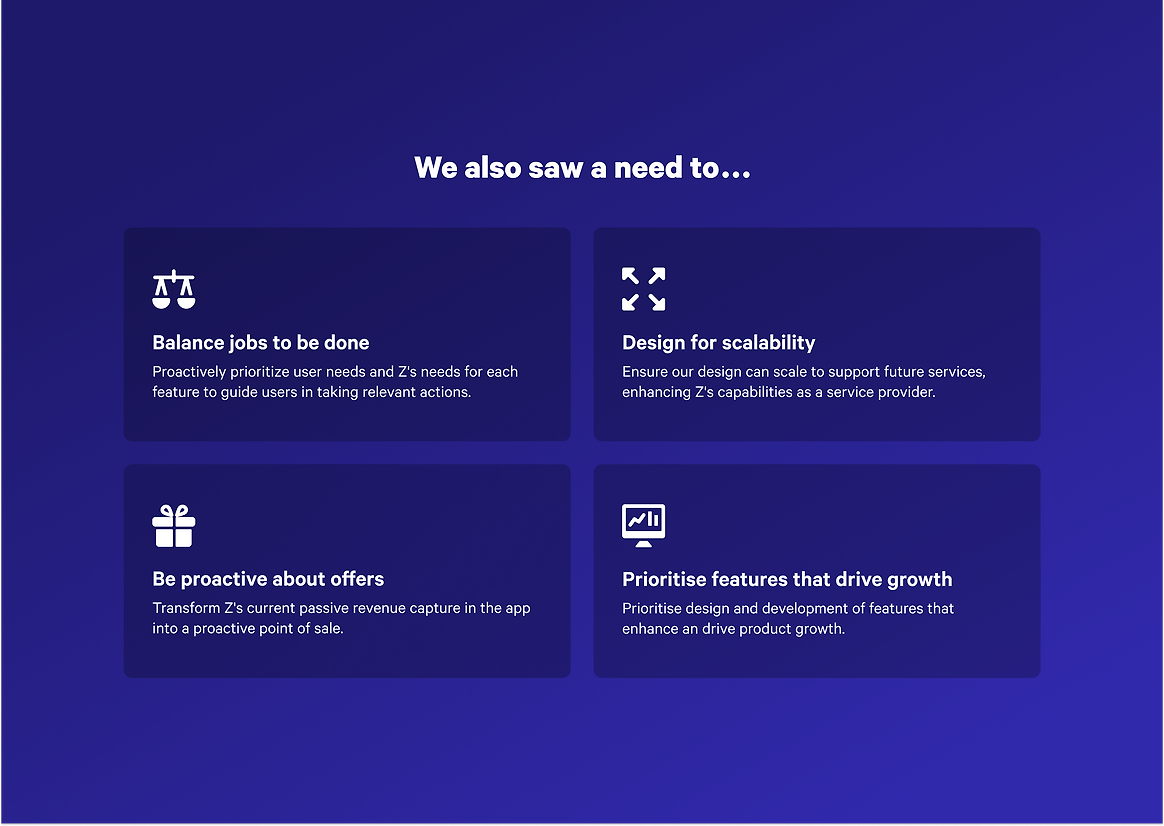
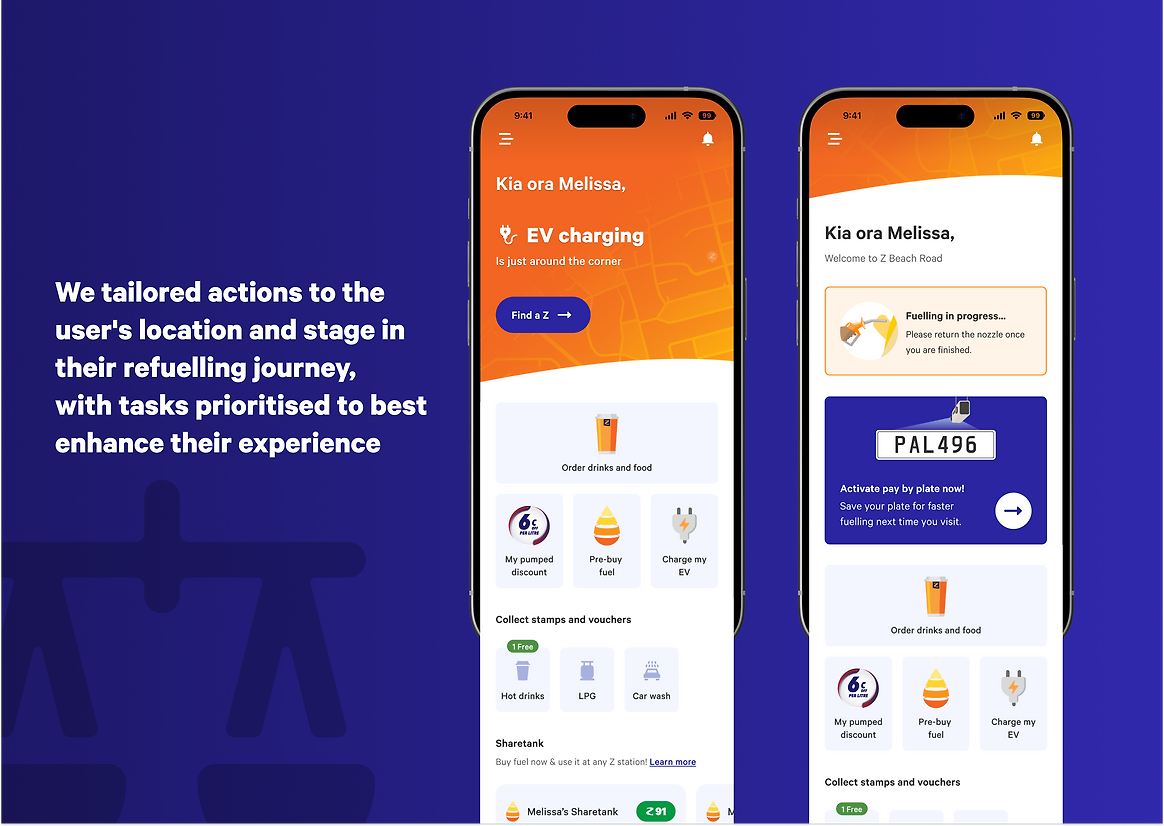
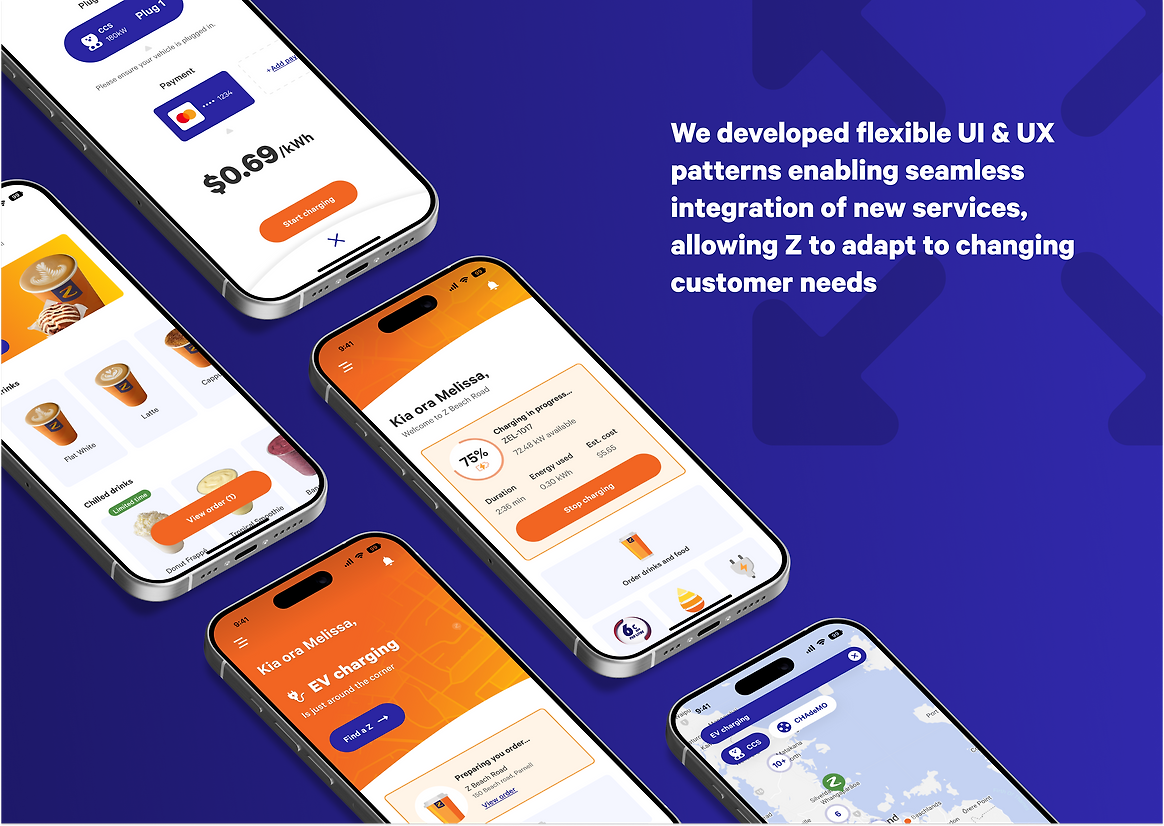
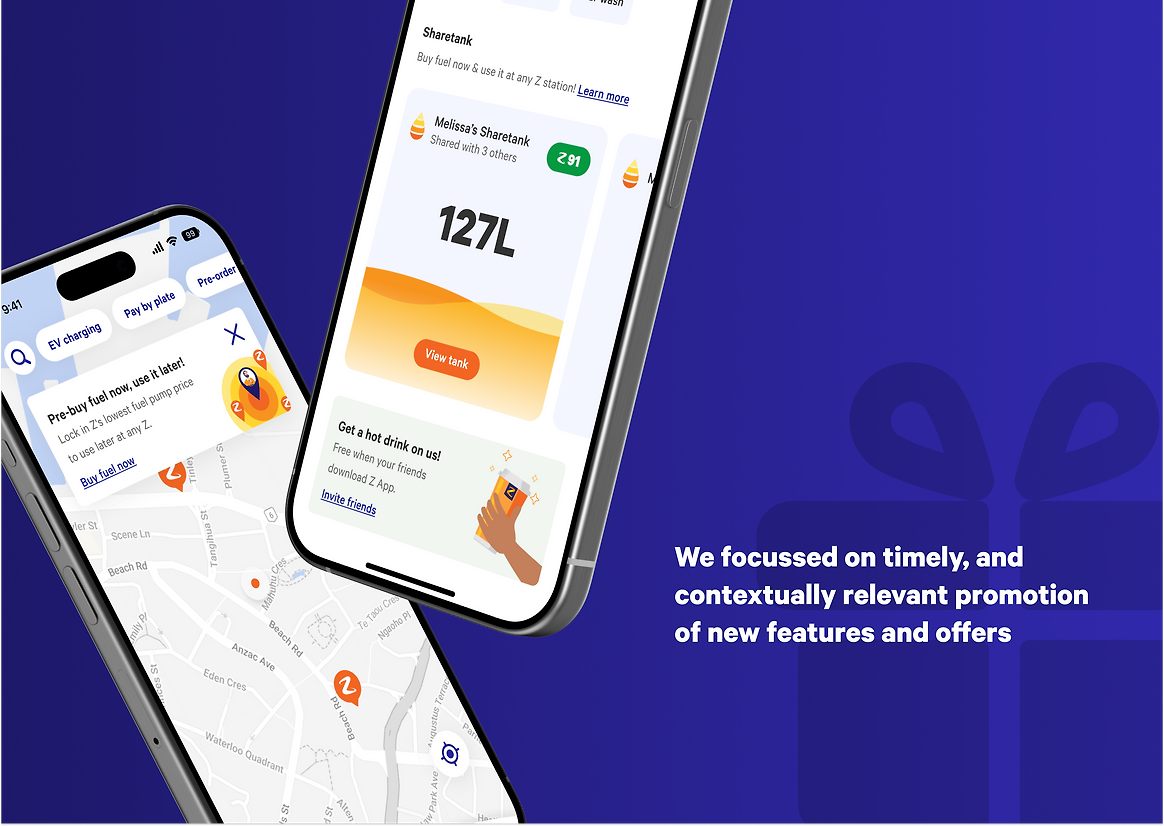
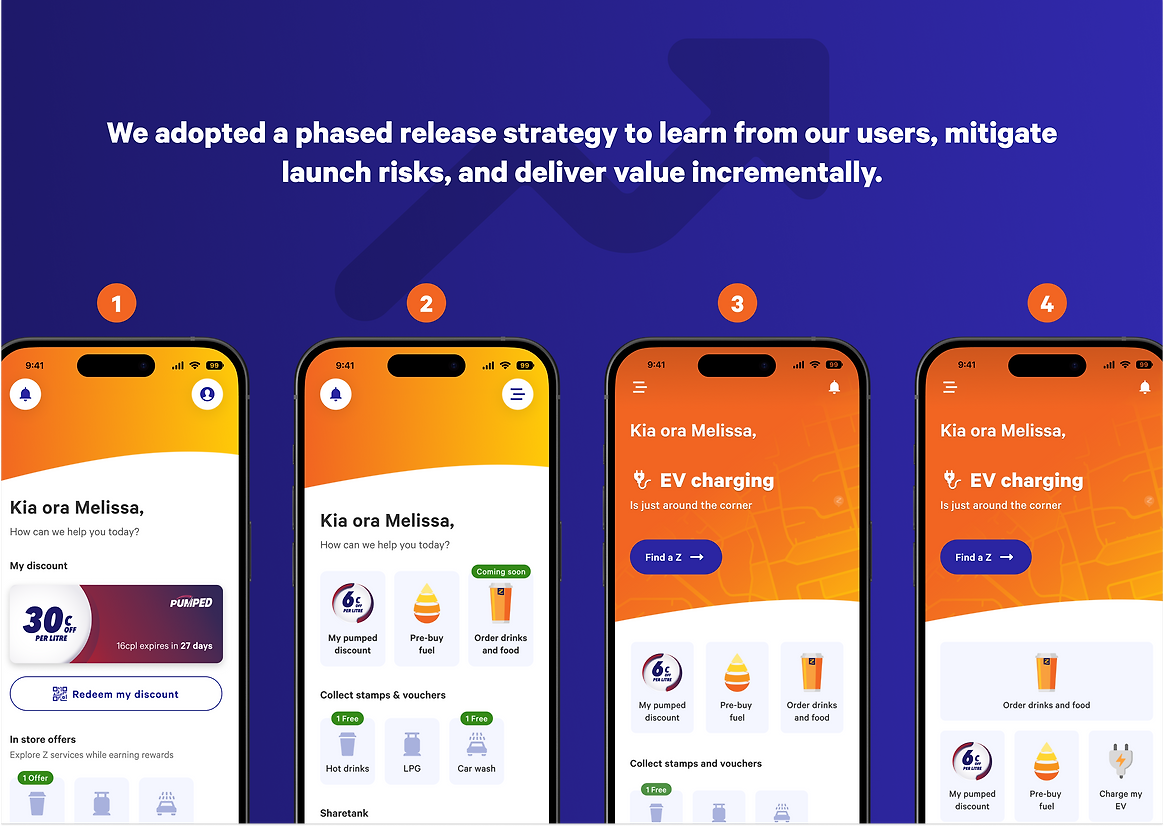
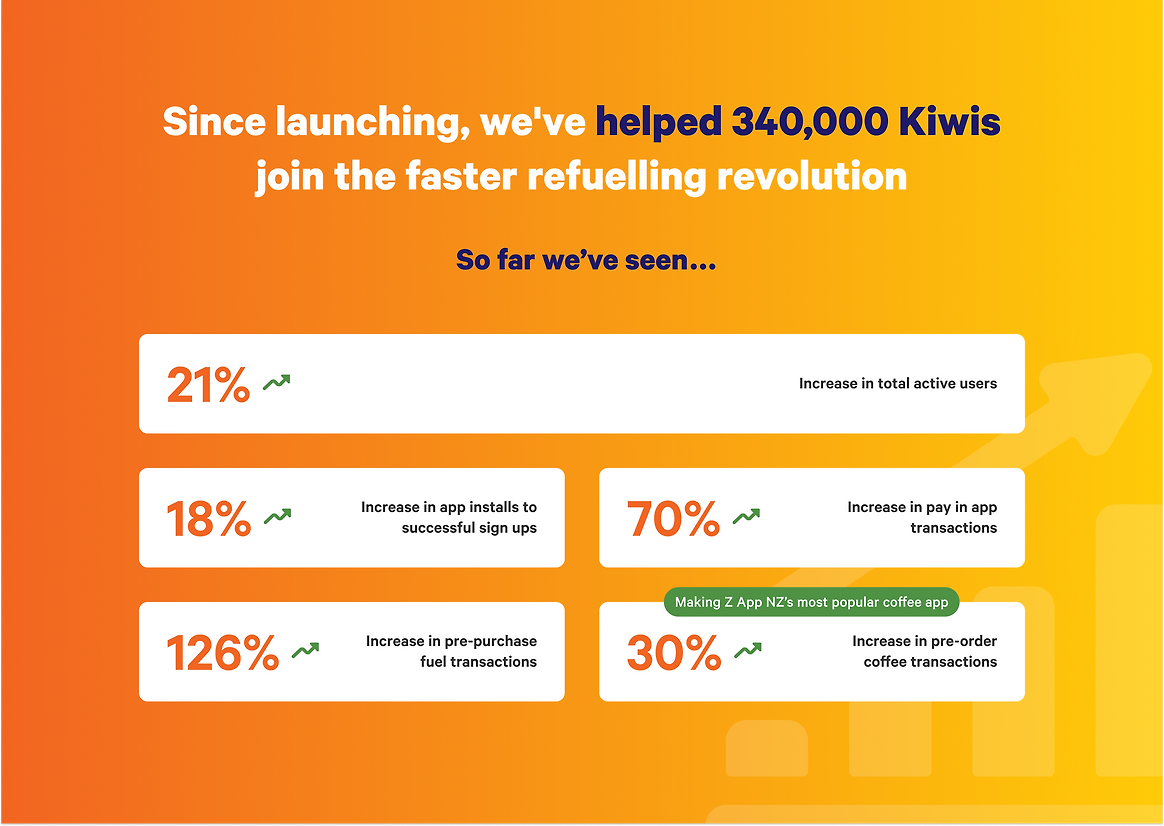
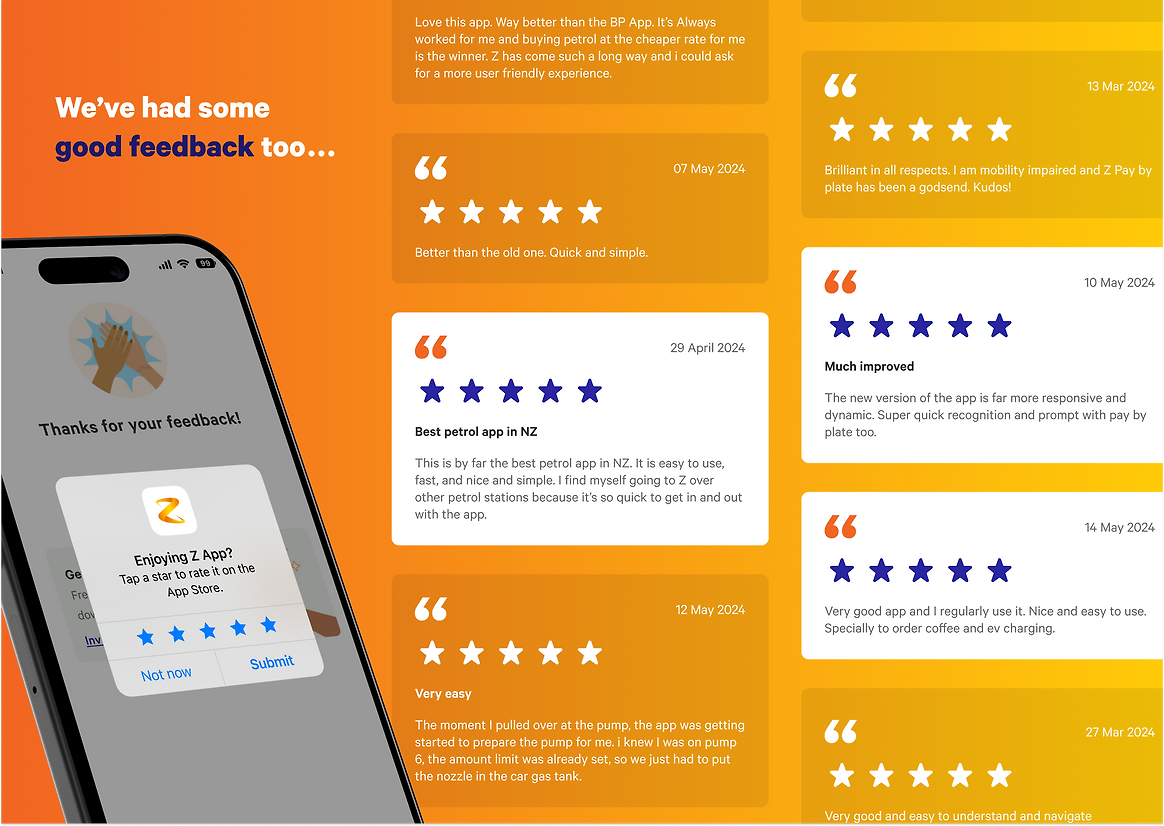
Description:
Z Energy, a leading New Zealand fuel retailer, faced challenges with their existing mobile app. Despite introducing innovative features like Fastlane, Sharetank, and Pre-order, the app struggled with user adoption and engagement. Comprehensive research revealed significant barriers to user experience, including cognitive overload, feature complexity, navigation issues, and technical problems. These challenges limited both customer satisfaction and Z Energy's ability to scale the product effectively.
The opportunity lay in reimagining the entire app experience to align with Z Energy's vision of pioneering a faster refuelling experience for Kiwis. This vision extended beyond traditional fuel to include electric vehicle charging and even coffee purchases, presenting a chance to create a versatile, user-friendly platform that could adapt to changing consumer needs and emerging technologies.
Recognising that incremental changes would be insufficient, the team opted for a complete overhaul of the app. The approach centred on human-centred design practices and involved several key strategies:
1. Comprehensive User Research: Conducted customer interviews, usability testing, and a diary study to identify pain points and user needs.
2. Holistic Ecosystem Design: Developed a cohesive and harmonious ecosystem that balanced various user tasks and simplified the overall experience.
3. Scalability Focus: Created flexible UI and UX patterns to accommodate future services and adapt to evolving customer needs.
4. Contextual Relevance: Prioritized timely and relevant promotions of new offers and features based on user location and journey stage.
5. Phased Implementation: Adopted a staged release strategy, focusing on high-value features first and allowing for continuous refinement based on user feedback.
6. Accessibility Improvements: Addressed various usability issues, enhancing the app's accessibility for a wider range of users.
7. Technical Optimization: Worked on improving app-pump connectivity and reducing technical errors to ensure a smoother user experience.
The design process involved extensive workshopping, ideation sessions, and iterative usability testing. This approach allowed the team to address design issues promptly and minimize launch risks.
The revamped Z Energy app achieved remarkable success, demonstrating significant improvements in user engagement and business metrics:
1. User Adoption: 340,000 New Zealanders joined the new platform, representing a 21% increase in total active users.
2. Improved Onboarding: The app saw an 18% increase in conversion from installation to successful sign-up, indicating a more intuitive and user-friendly onboarding process.
3. Transaction Growth:
- 70% increase in pay-in-app transactions
- 30% increase in pre-order coffee transactions
- 126% increase in pre-purchase fuel transactions
4. Technical Performance: Substantial decrease in app crashes and error responses, enhancing overall reliability.
5. User Satisfaction: Positive feedback and improved ratings in app stores, reflecting enhanced user experience.
These outcomes not only addressed the initial challenges but also positioned Z Energy at the forefront of digital innovation in the fuel retail sector. The success of the app redesign demonstrated the power of user-centred design in transforming a complex, feature-rich application into an intuitive, efficient tool that genuinely enhances the customer journey.
By creating a more engaging and user-friendly refuelling experience, Z Energy has not only improved its digital presence but also laid a strong foundation for future innovations and adaptations in an evolving market landscape.